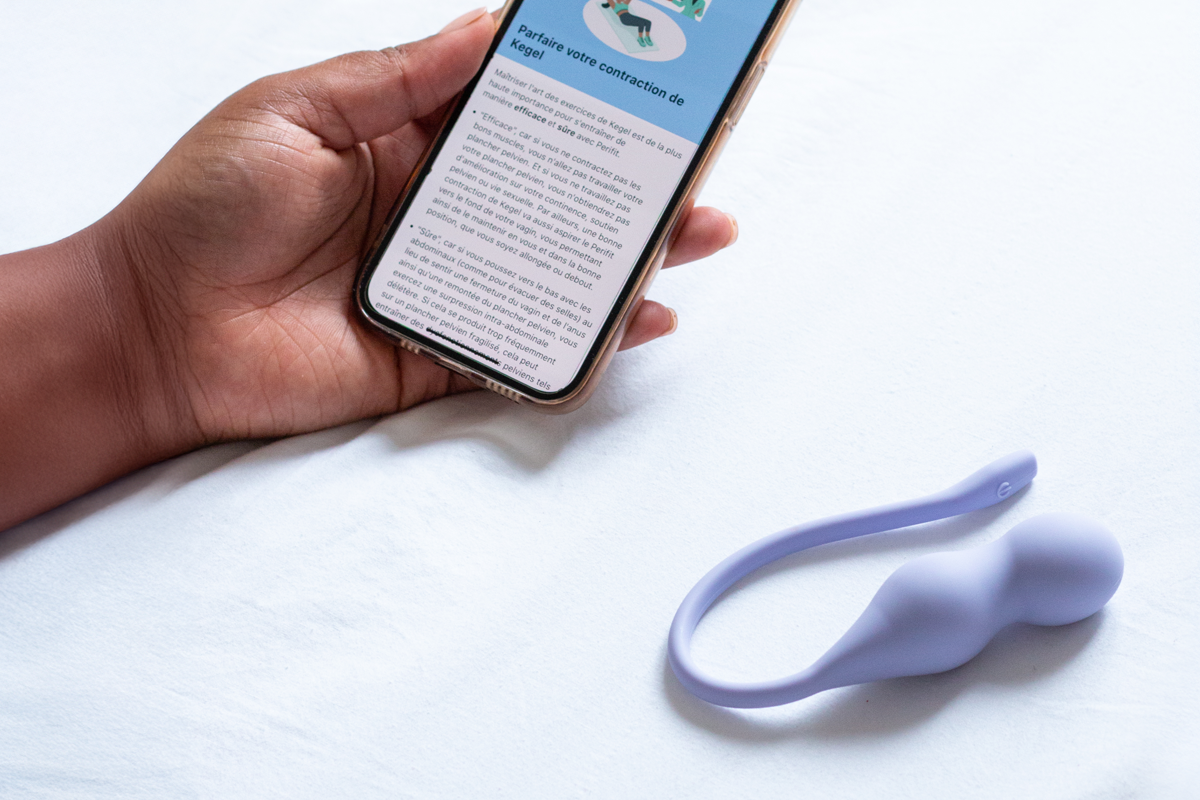Embarking on the journey of recovery following a hysterectomy is a crucial step towards regaining your health and well-being. Understanding the importance of pelvic floor exercises in this process can significantly enhance your recuperation experience. These exercises are not just about healing; they are a gateway to improved bladder control, enhanced pelvic support, and better sexual function. In this guide, you will discover safe, effective techniques to perform these exercises, ensuring you are well-equipped to navigate post-surgery rehabilitation. Armed with professional insights and practical advice, you will be empowered to embrace a more confident and comfortable recovery.
Why do pelvic floor exercises matter after a hysterectomy?
Supporting pelvic function and recovery
Pelvic floor exercises post hysterectomy play a crucial role in restoring and maintaining pelvic function.
💡 These exercises help preserve the strength of the muscles that support the bladder, bowel, and sexual organs, which can be compromised after surgery.
Engaging in regular exercises can significantly enhance pelvic floor muscle fitness, contributing to better bladder and bowel control and reducing symptoms such as peeing during penetration, which some individuals may experience after a hysterectomy.
In addition, maintaining pelvic floor strength is especially important for those concerned about pelvic prolapse and sex, as it can help prevent complications and improve sexual well-being after surgery.
Alleviating incontinence and boosting confidence
Following a hysterectomy, individuals may experience stress, urge, or mixed urinary incontinence due to weakened pelvic muscles. Implementing targeted exercises can mitigate these symptoms, leading to improved bladder control.
As individuals notice a reduction in incontinence issues, their confidence can also increase, providing a greater sense of freedom and comfort in daily activities.
Enhancing quality of life
The importance of these exercises extends beyond physical rehabilitation.
By strengthening pelvic muscles, individuals often observe improvements in sexual function and overall pelvic health. Stronger pelvic floor muscles can help alleviate pelvic floor pain during intercourse, making sexual activity more comfortable and enjoyable.
This holistic approach not only aids in physical recovery but also supports emotional well-being, empowering individuals to lead fulfilling lives post-surgery. Regular and correct practice of pelvic floor exercises is thus indispensable for optimal recovery and a better quality of life.(1)
When to start pelvic floor exercises after hysterectomy?
Gentle pelvic floor activation can typically begin once your catheter is removed and you can urinate independently, which usually occurs within the first few days post-surgery. Starting early, with your healthcare provider's guidance, is essential for optimal recovery.
For most women, pelvic floor exercises are typically started around 4 to 6 weeks post-surgery, but this timeframe may be longer or shorter based on your surgeon's guidance and your personal healing process. (2)
💡 It is essential that pelvic floor exercises are comfortable and pain-free.
If you experience any pain or discomfort during or after the exercises, you should stop immediately and consult your healthcare provider.
How long does it take to fully recover pelvic floor strength after a hysterectomy?
Full recovery of pelvic floor strength after a hysterectomy typically takes about 3 months, though this can vary depending on the type of hysterectomy, your overall health, and whether there are any postoperative complications.
While you may feel significantly better after 6 to 8 weeks and can gradually return to most activities, internal healing and rebuilding pelvic floor strength continue beyond this period. (3)
A structured pelvic floor exercise program, often starting gently around 6 weeks post-surgery (with your doctor’s approval), can support this recovery process. Many physiotherapists recommend a dedicated 12-week program to rebuild pelvic floor strength and resilience.
💡 However, the timeline for regaining full pelvic floor function may be longer if you had an abdominal hysterectomy or if you experience any complications.
Consistent, correct pelvic floor exercises and guidance from a pelvic health physiotherapist can help ensure optimal recovery and long-term pelvic health
Best pelvic floor exercises post hysterectomy
Below are step-by-step instructions for key pelvic floor exercises, recommended frequency, and important precautions to avoid overexertion.
Kegel exercises
Kegel exercises are foundational in strengthening the pelvic floor post hysterectomy. These exercises involve contracting and relaxing the muscles that support the bladder, uterus, and bowels.
Instructions:
- Sit or lie down comfortably with your pelvic floor muscles relaxed.
- Inhale, then as you exhale, gently squeeze and lift your pelvic floor muscles (as if stopping the flow of urine or “sipping up a thick smoothie”).
- Hold the contraction for 3–5 seconds.
- Relax completely for 5–10 seconds before repeating.
- Avoid tightening your abdomen, thighs, or buttocks during the exercise.
Frequency:
- Start with up to 10 repetitions per session.
- Perform 2–3 sessions daily.
Pelvic Tilts
Pelvic tilts contribute to alleviating lower back pressure while enhancing core stability.
Instructions:
- Lie on your back with knees bent and feet flat on the floor.
- Gently squeeze your pelvic floor muscles and draw in your lower stomach muscles.
- Tilt your pelvis upward, flattening your lower back against the floor.
- Hold for 5 seconds, then relax.
- Return to the starting position.
Frequency:
- Repeat up to 10 times per session.
- Perform 1–2 sessions daily.
Bridge Pose
The bridge pose is another effective exercise for recovering pelvic strength and is considered a key posture in yoga for pelvic floor strength, as it engages both the core and pelvic muscles.
Instructions:
- Lie on your back, knees bent, feet flat on the floor.
- Engage your pelvic floor and core muscles.
- Lift your hips toward the ceiling, forming a straight line from shoulders to knees.
- Hold for a few seconds, then lower hips back down slowly.
Frequency:
- Repeat 5–10 times per session.
- Perform 1–2 sessions daily.
Cat-Cow Stretch
This gentle mobility exercise helps loosen the spine and improve back flexibility. It also promotes pelvic movement and can relieve muscle tension, making it a great addition to your post-surgery recovery routine.
Instructions:
- Start on hands and knees, hands under shoulders, knees under hips.
- Inhale, arch your back (cow pose), lifting your gaze to the ceiling and tilting your pelvis up.
- Exhale, round your back (cat pose), looking toward your abdomen, tucking your tailbone and drawing your belly in.
- Move slowly and gently with each breath.
Frequency:
- Repeat for 10–20 breaths per session.
- Perform 1–2 sessions daily.
Diaphragmatic (Deep) Breathing with Pelvic Engagement
Diaphragmatic breathing combined with pelvic floor engagement enhances the connection between breath and deep muscles. This practice, a form of breathing exercises to strengthen pelvic floor, improves body awareness and supports the gradual restoration of pelvic floor strength after surgery.
Instructions:
- Lie on your back with knees bent.
- Place your hands on your rib cage.
- Inhale deeply, feeling your rib cage expand.
- As you exhale, gently draw in your pelvic floor muscles.
- Let your breath flow smoothly from one to the next.
Frequency:
- Repeat for 10–20 breaths per session.
- Perform 1–2 sessions daily.
How often should I do pelvic floor exercises after hysterectomy?
After a hysterectomy, pelvic floor exercises can typically be performed daily, starting with gentle routines and progressing gradually as your body heals and with your healthcare provider’s approval. Most physiotherapists recommend doing 8–12 repetitions per session, up to three times per day, focusing on correct technique and comfort rather than quantity. (3)
It’s important to avoid overexertion—if you experience pain or discomfort during or after exercises, stop and allow your body more time to heal before restarting. Always check with your surgeon or doctor before beginning or intensifying your pelvic floor routine.
What happens if I don’t do pelvic floor exercises after a hysterectomy?
Potential consequences
Neglecting pelvic floor exercises after a hysterectomy can have significant implications for post-surgery recovery and overall pelvic health.
💡 Without proper muscle rehabilitation, you may face weakened pelvic floor muscles, increasing the risk of urinary incontinence and pelvic organ prolapse.
Problems such as these can substantially impact quality of life, leading to challenges with bladder control and daily activities. (4)
Long-term risks
Over time, the absence of pelvic floor exercises may also contribute to chronic pelvic pain and difficulty with bowel movements. The lack of muscle support for the pelvic organs can lead to further dysfunction and compound existing issues, necessitating medical attention or additional interventions. (5)
Pelvic floor exercises post hysterectomy: is it safe to use Perifit?
Yes, Perifit Care and Care+ can be used after a hysterectomy, but only once your body has had enough time to heal. After surgery, it’s essential that your internal organs are properly supported, that bladder and bowel function have stabilized, and that the risk of pelvic organ prolapse is minimized.
For this reason, you should always get approval from your surgeon or healthcare provider before starting pelvic floor exercises with a device.
For most women, this clearance is given around 4 to 6 weeks after a hysterectomy, although recovery time can vary depending on the type of surgery and individual healing. Once approved, gentle, guided pelvic floor exercises can support recovery and help rebuild strength safely.
Exercises to avoid after a hysterectomy
After a hysterectomy, you should avoid certain exercises and activities—especially in the first 6 to 12 weeks, to protect your healing tissues and pelvic floor:
- Intense abdominal exercises: Avoid sit-ups, crunches, abdominal curl machines, double leg lifts, and advanced core moves, as these can increase intra-abdominal pressure and strain the pelvic floor and surgical site.
- High-impact activities: Running, jumping, trampolining, and competitive sports should be avoided as they place significant stress on the pelvic floor and healing tissues.
- Heavy lifting: Do not lift anything heavier than 10 pounds (about the weight of a gallon of milk) for at least 6 to 12 weeks, as this can overload your pelvic floor and compromise healing.
- Heavily loaded resistance exercises: Using heavy weights or resistance machines for the abdomen or lower body can increase the risk of pelvic floor dysfunction and should be postponed until cleared by your healthcare provider.
- Intense abdominal stretching: Some yoga poses (such as Cobra) and certain Pilates exercises that deeply stretch or compress the abdomen should be avoided during early recovery.
- Cycling and vacuuming: These activities may also be restricted in the first few weeks, especially after vaginal or abdominal hysterectomy, due to potential strain on the pelvic area.
Discussing the appropriate resumption of such activities with healthcare professionals is recommended based on your individual recovery progress and the specific surgery undertaken.
Tips for safe and effective recovery after hysterectomy
Listen to your body
After a hysterectomy, it's crucial to tune into your body's signals. It's normal to feel tired and experience some discomfort; these are part of the healing process. Rest when needed and avoid rushing into activities that may strain your recovering tissues. Recognize fatigue as a cue to rest, supporting your body’s natural recovery rhythms.
Incorporate exercises into your routine
Integrating pelvic floor exercises post hysterectomy into your daily routine can significantly boost recovery. Start with gentle motion like short walks, progressively increasing intensity as comfort allows. These exercises enhance muscle strength and endurance, gradually improving bladder control and pelvic support.
Prioritize hydration, sleep, and nutrition
A balanced diet, proper hydration, and quality sleep are foundational to healing. Water facilitates detoxification, while nutrients provide energy and aid tissue repair. Adequate rest enhances immune function, allowing your body to regenerate effectively.
Be patient and consistent
Patience and consistency are key. Recovery is not immediate, but with steady practice and perseverance, the benefits unfold. Progress at a pace that feels right, understanding that each day brings you closer to optimal health and vitality.
In embarking on your post-hysterectomy journey, embracing pelvic floor exercises can serve as a cornerstone for recovery and overall well-being. By integrating these exercises into your routine, you are not only enhancing pelvic support and improving bladder control but also fostering increased comfort in daily activities and intimacy. Remember, the path to recovery is uniquely yours, and seeking professional guidance when needed can help tailor these exercises to your specific needs. By prioritizing pelvic health, you are taking empowered steps toward a stronger, more resilient future. Continue to listen to your body and celebrate each milestone along the way.
Sources:
- https://www.bedfordshirehospitals.nhs.uk/patient-information-leaflets/exercises-that-can-be-carried-out-after-a-hysterectomy/
- https://www.brisbanespineclinic.com.au/blog/exercise-and-physiotherapy-after-a-hysterectomy/
- https://www.pelvicexercises.com.au/hysterectomy-recovery/
- https://www.nhs.uk/conditions/hysterectomy/recovery/
- https://pmc.ncbi.nlm.nih.gov/articles/PMC8281107/





